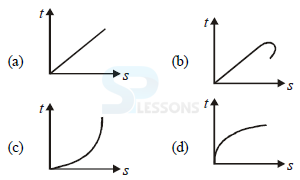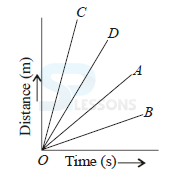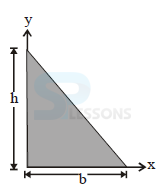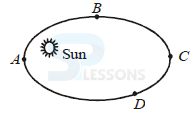 Introduction
Introduction
Mechanics, a branch of Physics is the area of Science that studies the behavior of physical bodies when subjected to forces or displacements, and the subsequent effects of the bodies on their environment. Mechanics Quiz lists some important questions for the General Science section of several competitive exams including Junior Engineer posts and other government sector related exams in India.
Mechanics is broadly classifies into three branches: Statics, which deals with forces acting on and in a body at rest; Kinematics, which describes the possible motions of a body or system of bodies; and Kinetics, which attempts to explain or predict the motion that will occur in a given situation. Primarily, Mechanics deals with the study of motion of objects.
 Quiz
Quiz
Mechanics Quiz - General Science Important Questions
1. Lightyear is
(a) light emitted by the sun in one year.
(b) time taken by light to travel from sun to earth.
(c) the distance traveled by light in free space in one year.
(d) time taken by earth to go once around the sun.
Ans: C
2. A passenger in a moving train tosses a coin. If the coin falls behind him, the train must be moving with
(a) an acceleration
(b) a deceleration
(c) a uniform speed
(d) any of the above
Ans: A
3. Watt–hour meter measures
(a) current
(b) voltage
(c) power
(d) electric energy
Ans: D
4. Which of the following time-displacement graph is not possible in nature?
Ans: B
5. A car is moving on a road and rain is falling vertically. Select the correct answer.
(a) The rain will strike the wind screen only
(b) The rain will strike the front screen only
(c) The rain will strike both the screens
(d) The rain will not strike any of the screens
Ans: B
6. SI unit of pressure is
(a) atmosphere
(b) bar
(c) pascal
(d) mm of Hg
Ans: C
7. Dimensions of impulse are
(a) [latex][MLT^–1][/latex]
(b) [latex][MLT^2][/latex]
(c) [latex][MT^–2][/latex]
(d) [latex][ML^–1T^–3][/latex]
Ans: A
8. [latex]ML2T^–2[/latex] are dimensions of
(a) force
(b) moment of force
(c) momentum
(d) power
Ans: B
9. The number of significant figures in 0.00060 m is
(a) 1
(b) 2
(c) 3
(d) 4
Ans: B
10. A particle is moving in a circular path of radius r. The displacement after half a circle would be
(a) zero
(b) [latex]\pi[/latex]r
(c) 2 r
(d) 2[latex]\pi[/latex]r
Ans: C
11. The numerical ratio of average velocity to average speed is
(a) always less than one
(b) always equal to one
(c) always more than one
(d) equal to or less than one
Ans: D
12. A vector quantity is a physical quantity which needs
(a) magnitude
(b) direction
(c) both (a) and (b)
(d) time
Ans: (a, b)
13. Which of the following are examples of uniform velocity?
(a) Motion of moon around earth
(b) Motion of planet around sun
(c) Motion of car on crowded road
(d) Motion of a moving fan
Ans: (a, b)
14. A person swims in a river aiming to reach exactly on the opposite point on the bank of a river. His speed of swimming is 0.5 m/s at an angle of 120º with the direction of flow of water. The speed of water is
(a) 1.0 m/s
(b) 0.5 m/s
(c) 0.25 m/s
(d) 0.43 m/s
Ans: C
15. When a body is stationary
(a) there is no force acting on it
(b) the force acting on it not in contact with it
(c) the combination of forces acting on it balances each other
(d) the body is in vacuum
Ans: C
16. Four cars A, B, C and D are moving on a levelled road. Their distance versus time graphs are shown in figure. Choose the correct statement
(a) Car A is faster than car D
(b) Car B is the slowest.
(c) Car C is faster than car D.
(d) Car C is the lowest.
Ans: (b, c)
17. A man getting down a running bus, falls forward because
(a) due to inertia of rest, road is left behind and man reaches forward
(b) due to inertia of motion upper part of body continues to be in motion in forward direction while feet come to rest as soon as they touch the road
(c) he leans forward as a matter of habit
(d) of the combined effect of all the three factors stated in (a), (b) and (c)
Ans: B
18. The relative velocity vAB or vBA of two bodies A and B may be
(1) greater than velocity of body A
(2) greater than velocity of body B
(3) less than the velocity of body A
(4) less than the velocity of body B
(a) (1) and (2) only
(b) (3) and (4) only
(c) (1), (2) and (3) only
(d) (1), (2), (3) and (4).
Ans: D
19. A parrot is sitting on the floor of a closed glass cage which is in a boy’s hand. If the parrot starts flying with a constant speed, the boy will feel the weight of the cage as
(a) unchanged
(b) reduced
(c) increased
(d) nothing can be said
Ans: A
20. A cannon after firing recoils due to
(a) conservation of energy
(b) backward thrust of gases produced
(c) Newton’s third law of motion
(d) Newton’s first law of motion
Ans: C
21. The force exerted by the floor of an elevator on the foot of a person standing there, is more than his weight, if the elevator is
(a) going down and slowing down
(b) going up and speeding up
(c) going up and slowing down
(d) either (a) or (b)
Ans: B
22. Consider an elevator moving downwards with an acceleration a, the force exerted by a passenger of mass m on the floor of the elevator is
(a) ma
(b) ma – mg
(c) mg – ma
(d) mg + ma
Ans: C
23. A large truck and a car, both moving with a velocity of same magnitude have a head-on-collision. Car suffers more damage than the truck. This is because
(a) the material used in car is inferior than the material used in truck.
(b) car experience the greater force of impact than the truck.
(c) momentum transferred to the truck is greater than the momentum transferred to the car.
(d) momentum transferred to the car is greater than the momentum transferred to the truck.
Ans: (b, d)
24. Frictional force
(a) always acts opposite to the direction of motion
(b) always acts in the direction of motion
(c) may act in the direction of motion
(d) always acts perpendicular to the direction of motion
Ans: C
25. A coin is placed on a rotating disc and is stationary w.r.t. the disc, then the direction of friction is
(a) along the direction of motion of the coin w.r.t. ground
(b) opposite to the direction of motion of the coin w.r.t. ground
(c) towards the centre of the disc
(d) away from the centre of the disc
Ans: C
26. A monkey is climbing up a rope, then the tension in the rope
(a) must be equal to the force applied by the monkey on the rope.
(b) must be less than the force applied by the monkey on the rope.
(c) must be greater than the force applied by the monkey on the rope.
(d) may be equal to, less than or greater the force applied by the monkey on the rope
Ans: A
27. Which of the following is NOT an illustration of Newton's third law ?
(a) Flight of a jet plane
(b) A cricket player lowering his hands while catching a cricket ball
(c) Walking on floor
(d) Rebounding of a rubber ball
Ans: B
28. Swimming is possible on account of
(a) first law of motion
(b) second law of motion
(c) third law of motion
(d) Newton’s law of gravitation
Ans: C
29. 1 kilowatt hour is equal to
(a) 1 joule
(b) 100 joule
(c) 36 joule
(d) 3.6 × [latex]10^3[/latex] kilo joule
Ans: d
30. The centre of mass of triangle shown in figure has coordinates
(a) x = [latex]\frac{h}{2}[/latex], y = [latex]\frac{b}{2}[/latex]
(b) x = [latex]\frac{b}{2}[/latex], y = [latex]\frac{h}{2}[/latex]
(c) x = [latex]\frac{b}{3}[/latex], y = [latex]\frac{h}{3}[/latex]
(d) x = [latex]\frac{h}{3}[/latex], y = [latex]\frac{b}{3}[/latex]
Ans: C
31. For a body falling freely under gravity from a height
(a) only the potential energy goes on increasing
(b) only the kinetic energy goes on increasing
(c) both kinetic energy as well as potential energy go on increasing
(d) the kinetic energy goes on increasing while potential energy goes on decreasing
Ans: D
32. A jet plane moves up in air because
(a) the gravity does not act on bodies moving with high speeds
(b) the thrust of the jet compensates for the force of gravity
(c) the flow of air around the wings causes an upward force, which compensates for the force of gravity
(d) the weight of air whose volume is equal to the volume of the plane is more than the weight of the plane
Ans: B
33. In an explosion, a body breaks up into two pieces of unequal masses. In this
(a) both parts will have numerically equal momentum
(b) lighter part will have more momentum
(c) heavier part will have more momentum
(d) both parts will have equal kinetic energy
Ans: A
34. For inelastic collision between two spherical rigid bodies
(a) the total kinetic energy is conserved
(b) the total mechanical energy is not conserved
(c) the linear momentum is not conserved
(d) the linear momentum is conserved
Ans: D
35. If a running boy jumps on a rotating table, which of the following is conserved?
(a) Linear momentum
(b) K.E
(c) Angular momentum
(d) None of these
Ans: C
36. A gymnast takes turns with her arms and legs stretched. When she pulls her arms and legs
(a) the angular velocity decreases
(b) the moment of inertia decreases
(c) the angular velocity stays constant
(d) the angular momentum increases
Ans: B
37. Two bodies A and B have masses M and m respectively where M > m and they are at a distance d apart. Equal force is applied to them so that they approach each other. The position where they hit each other is
(a) nearer to B
(b) nearer to A
(c) at equal distance from A and B
(d) cannot be determined
Ans: B
38. When a steady torque is acting on a body, the body (a) continues in its state of rest or uniform motion along a straight line
(b) gets linear acceleration
(c) gets angular acceleration
(d) rotates at a constant speed
Ans: C
39. A couple produces a
(a) pure linear motion
(b) pure rotational motion
(c) no motion.
(d) both linear and rotational motion
Ans: B
40. A balloon filled with CO2 released on earth would (neglect viscosity of air)
(a) climb with an acceleration 9.8 m/[latex]s^2[/latex]
(b) fall with an acceleration 9.8 m/[latex]s^2[/latex]
(c) fall with a constant acceleration 3.4 m/[latex]s^2[/latex]
(d) fall with acceleration and then would attain a constant velocity
Ans: C
41. When a satellite is in the synchronous orbit above the equator, it stays in one place with reference to the earth by making each revolution in just the same time as it takes the earth to rotate once. What is the altitude of the synchronous orbit?
(a) 20000 km
(b) 30000 km
(c) 32500 km
(d) 36000 km
Ans: D
42. If the earth stops rotating about its axis, the acceleration due to gravity will remain unchanged at
(a) equator
(b) latitude 45°
(c) latitutde 60°
(d) poles
Ans: D
43. Time period of a simple pendulum inside a satellite orbiting earth is
(a) zero
(b) [latex]\infty[/latex]
(c) T
(d) 2 T
Ans: B
44. The escape velocity of a body depends upon mass as
(a) m[latex]^0[/latex]
(b) m[latex]^1[/latex]
(c) m[latex]^2[/latex]
(d) m[latex]^3[/latex]
Ans: A
45. There is no atmosphere on the moon because
(a) it is closer to the earth and also it has the inactive inert gases in it.
(b) it is too for from the sun and has very low pressure in its outer surface.
(c) escape velocity of gas molecules is greater than their root mean square velocity.
(d) escape velocity of gas molecules is less than their root mean square velocity.
Ans: D
46. A missile is launched with a velocity less than escape velocity. The sum of its kinetic and potential energies is
(a) zero
(b) negative
(c) positive
(d) may be positive, negative or zero
Ans: B
47. If the earth rotates faster than its present speed, the weight of an object will
(a) increase at the equator but remain unchaged at the poles
(b) decrease at the equator but remain unchanged at the poles
(c) remain unchaged at the equator but decrease at the poles
(d) remain unchanged at the equator but increase at the poles
Ans: B
48. The maximum kinetic energy of a planet moving around the sun is at a position
(a) A
(b) B
(c) C
(d) D
Ans: A
49. A man waves his arms while walking. This is to
(a) keep constant velocity
(b) ease the tension
(c) increase the velocity
(d) balance the effect of earth’s gravity
Ans: D
50. A ball is dropped from a satellite revolving round the earth at a height of 120 km. The ball will
(a) continue to move with same speed along a straight line tangentially to the satellite at that time.
(b) continue to move with the same speed along the original orbit of satellite.
(c) fall down to earth gradually
(d) go far away in space
Ans: B
51. Two satellites of earth, S1 and S2 are moving in the same orbit. The mass of S1 is four times the mass of S2. Which one of the following statements is true?
(a) The potential energies of earth satellites in the two cases are equal.
(b) S1 and S2 are moving with the same speed.
(c) The kinetic energy of the two satellites are equal.
(d) The time period of S1 is four times that of S2.
Ans: B
52. If suddenly the gravitational force of attraction between the earth and a satellite revolving around it becomes zero, then the satellite will
(a) continue to move in its orbit with same speed
(b) move tangentially to the original orbit with same speed
(c) become stationary in its orbit
(d) move towards the earth
Ans: B
53. Which one of the following statements regarding artificial satellite of the earth is incorrect ?
(a) The orbital velocity depends on the mass of the satellite
(b) A minimum velocity of 8 km/sec is required by a satellite to orbit quite close to the earth
(c) The period of revolution is large if the radius of its orbit is large
(d) The height of a geostationary satellite is about 36000 km from earth
Ans: A
54. Kepler’s second law (law of area) is nothing but a statement of
(a) work energy theorem
(b) conservation of linear momentum
(c) conservation of angular momentum
(d) conservation of energy
Ans: C
55. A person sitting on a chair in a satellite feels weightless because
(a) the earth does not attract the objects in a satellite
(b) the normal force by the chair on the person balances the earth’s attraction
(c) the normal force is zero
(d) the person in satellite is not accelerated
Ans: C
56. A hole is drilled through the earth along the diameter and a stone is dropped into it. When the stone is at the center of the earth, it possesses
(a) weight
(b) mass
(c) acceleration
(d) potential energy
Ans: B







